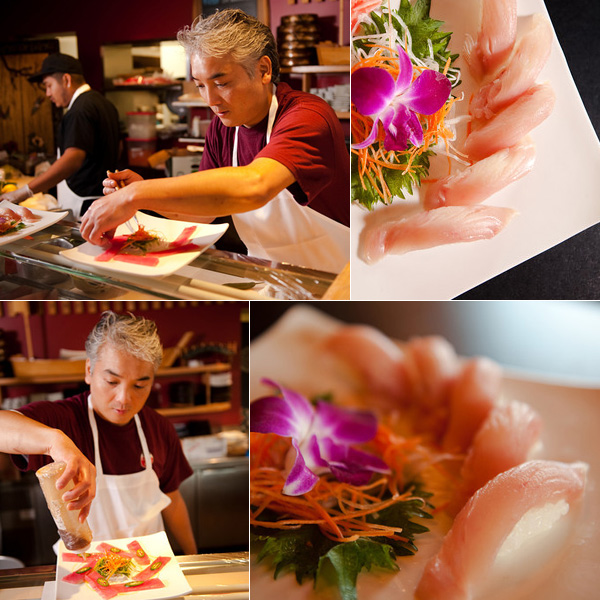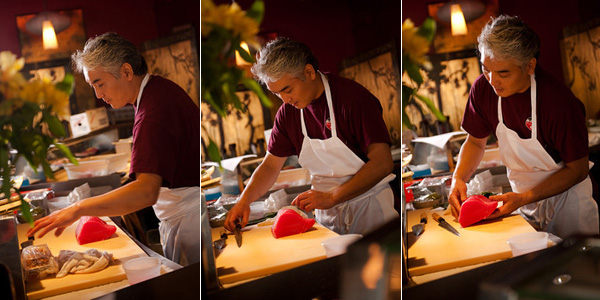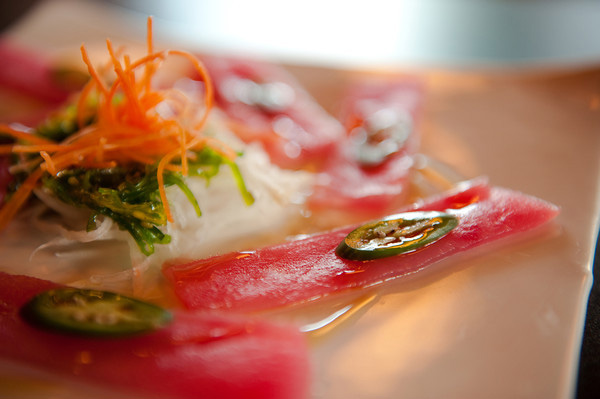
This story is sponsored by Fuji Ya.
Recently, a 754-pound Bluefin tuna sold at auction in Japan for almost $400,000. Would you pay that much for a fish? What if you knew it was in danger of vanishing forever?
For Tom and Carol Hanson, no amount of money is worth contributing to the possible extinction of a species. That’s why their restaurant, Fuji Ya, recently announced that they’ve eliminated Bluefin tuna from their menu.
It was no small decision. Sushi lovers are willing to pay serious cash to wrap their taste buds around Bluefin. It’s one of the most sought after fish for its buttery texture and rich taste (a result of the fish’s fattier diet).
But the explosion in popularity of sushi across the world in the last ten years has led to an even bigger explosion in demand for Bluefin. And now these coveted fish are disappearing from the oceans in alarming numbers.

Why are they disappearing? Mr. Hanson says overfishing and bad fishing practices are contributing factors. Limits on Bluefin fishing have failed to stem the tide of Bluefin loss and Bluefin farms off the coasts of several countries may be aggravating the issue. The practice, known as tuna “ranching” often involves catching fish while they’re young, keeping them in ocean pens, and feeding them until they reach a more salable size. The issue is that these fish aren’t reaching a mature enough age to reproduce. And breeding Bluefin in captivity has proven to be a nearly futile task.
Top sushi restaurants around the country, such as Fuji Ya, are leading the way on the issue. Even if it means losing customers in the short term. The Fuji-Ya owners realize that’s a possibility. But they’re hopeful that as more people become aware of the problem, they’ll make more informed choices about the variety of sushi they’ll eat (and where they’ll go to get it).

Can the Bluefin be saved? Mr. Hanson is optimistic that sustainable Bluefin is around the corner, pointing to a university in Japan that has recently made a breakthrough in breeding the fish. But until then, Fuji Ya will point patrons to other equally tasty and sustainable sushi alternatives.
Excellent Bluefin Alternatives at Fuji Ya: Mr. Hanson says Ahi and Bigeye tuna are both excellent, sustainable sushi options on the menu at Fuji Ya. For people who prefer an even richer, oily texture, the Albacore toro or Bigeye toro may also be good alternatives.
Fuji Ya
Web: www.fujiyasushi.com
Facebook: http://www.facebook.com/fujiyasushi
Twitter: http://twitter.com/Fuji_Ya
Minneapolis:
600 West Lake St
Minneapolis, MN 55408
612.871.4055
Saint Paul:
465 Wabasha St (7th & Wabasha)
Saint Paul, MN 55102
651.310.0111


Comments are closed.